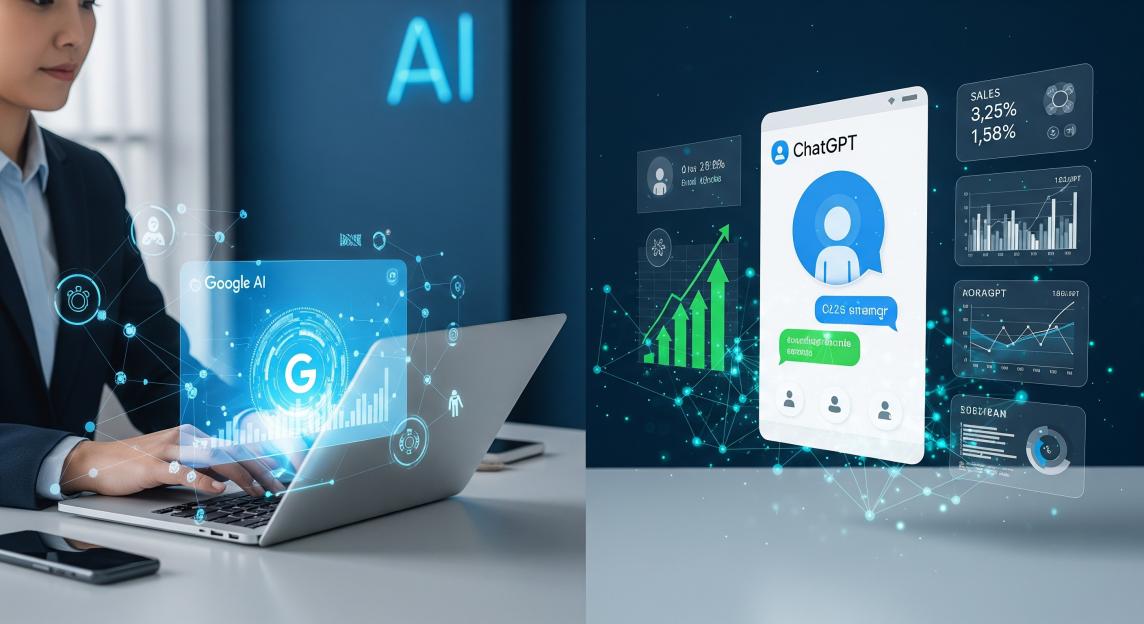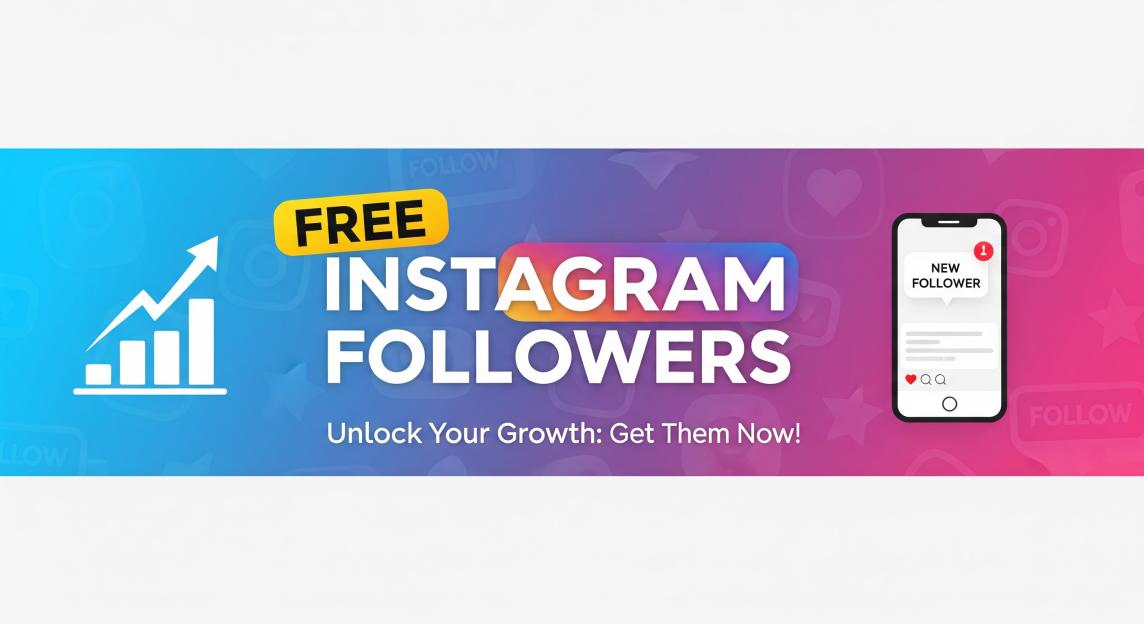You’re watching your competitor’s sales numbers climb while yours plateau. They seem to have cracked a code you’re still trying to understand. The difference? They’ve embraced the AI revolution that’s reshaping how businesses connect with customers, generate leads, and close deals. This isn’t about replacing human touchâit’s about amplifying your sales power with intelligent tools that work 24/7, understand customer behavior better than ever before, and create personalized experiences at scale.
The sales landscape has fundamentally shifted. Traditional cold calling and generic email campaigns are losing their punch, while AI-powered strategies are delivering results that seemed impossible just two years ago. Smart businesses are already leveraging Google’s AI Mode and ChatGPT to automate lead qualification, craft compelling sales copy, personalize customer interactions, and predict buying behaviors with remarkable accuracy.
Disclaimer: Results may vary based on implementation, industry, and market conditions. This guide provides educational information about AI tools and should not be considered guaranteed business advice.
Understanding the AI Sales Revolution
The Current State of AI in Sales
Artificial intelligence has moved beyond buzzword status to become a practical necessity for competitive sales teams. Recent studies show that businesses using AI in their sales processes report an average revenue increase of 37% and improved lead conversion rates by up to 50%. This dramatic shift stems from AI’s ability to process vast amounts of customer data, identify patterns human sales teams might miss, and automate time-consuming tasks that previously required hours of manual work.
Google’s AI Mode and ChatGPT represent two powerful approaches to this transformation. Google’s AI Mode integrates seamlessly with search behavior and customer journey mapping, while ChatGPT excels at content creation, customer communication, and lead nurturing automation. Together, they create a comprehensive sales enhancement ecosystem.
Why Traditional Sales Methods Are Falling Short
Modern buyers are more informed and skeptical than ever before. They research extensively before making contact with sales teams, expect personalized experiences, and can instantly detect generic, mass-produced sales approaches. Traditional sales methods fail because they:
- Lack personalization at scale
- Cannot process real-time customer behavior data
- Require extensive manual effort for basic tasks
- Miss subtle buying signals in customer interactions
- Struggle to maintain consistent follow-up across large prospect pools
AI sales tools address these limitations by providing continuous customer insight analysis, automated personalization, predictive behavior modeling, and consistent communication management.
Google’s AI Mode: Your Search-Powered Sales Engine
Understanding Google AI Mode Capabilities
Google’s AI Mode transforms how businesses understand and interact with potential customers through search behavior analysis. This powerful tool analyzes search patterns, identifies intent signals, and provides actionable insights about prospect readiness and interest levels.
Key capabilities include:
- Search intent analysis for lead qualification
- Competitive intelligence gathering
- Customer journey mapping through search behavior
- Content optimization for maximum visibility
- Local search enhancement for location-based businesses
Setting Up Google AI Mode for Sales Success
Getting started with Google AI Mode requires strategic setup and configuration. Begin by connecting your Google Business Profile, Google Analytics, and Google Ads accounts to create a comprehensive data ecosystem. This integration allows AI Mode to analyze customer touchpoints across multiple platforms and provide unified insights.
Configure your business categories and target keywords relevant to your sales objectives. Include primary keywords like “AI sales automation,” “ChatGPT for business,” “Google AI marketing,” and “artificial intelligence sales tools.” Additionally, incorporate LSI keywords such as “machine learning customer insights,” “automated lead generation,” “predictive sales analytics,” and “intelligent customer engagement.”
Advanced Search Intelligence Strategies
Leverage Google AI Mode’s search intelligence to identify high-intent prospects before they contact your sales team. Set up alerts for specific search patterns that indicate buying readiness, such as “best [your product category],” “compare [your product] vs competitors,” or “[your service] pricing.”
Create content that targets these high-intent search queries, positioning your business as the solution when prospects are actively researching. Use Google AI Mode’s suggestion features to identify related search terms and expand your content strategy to capture broader audience segments.
Local AI Optimization for Regional Sales
For businesses with physical locations or regional service areas, Google AI Mode’s local optimization features can dramatically improve sales conversion rates. The system analyzes local search patterns, identifies geographic trends, and suggests location-specific content strategies.
Optimize your Google Business Profile with AI-suggested keywords, respond to reviews using AI-generated responses that maintain your brand voice, and create location-specific landing pages that address regional customer needs and preferences.
ChatGPT: Your AI Sales Assistant
Transforming Customer Communication
ChatGPT revolutionizes sales communication by providing instant, personalized responses that maintain consistency while addressing individual customer needs. Unlike static chatbots, ChatGPT can engage in nuanced conversations, handle complex questions, and adapt its communication style to match different customer personalities and preferences.
Implement ChatGPT as your first-line customer engagement tool, handling initial inquiries, qualifying leads, and scheduling appointments with human sales representatives. This approach ensures no leads fall through cracks while freeing your sales team to focus on high-value activities like closing deals and building relationships.
Content Creation for Sales Excellence
ChatGPT excels at creating compelling sales content across multiple formats and channels. Use it to generate:
- Email sequences tailored to different customer segments
- Social media content that engages and converts
- Product descriptions that highlight benefits and address objections
- Sales scripts for phone calls and presentations
- Follow-up messages that maintain engagement without seeming pushy
The key to effective ChatGPT content creation lies in providing detailed prompts that include your brand voice, target audience characteristics, specific objectives, and desired outcomes. The more context you provide, the more relevant and effective the generated content becomes.
Lead Qualification and Scoring
Transform your lead qualification process using ChatGPT’s analytical capabilities. Create detailed customer personas and train ChatGPT to identify which prospects match your ideal customer profile. Input customer interaction data, and ChatGPT can score leads based on engagement level, buying signals, budget indicators, and timeline factors.
This automated qualification system ensures your sales team focuses energy on the most promising opportunities while maintaining appropriate follow-up with lower-priority leads through automated nurturing sequences.
Objection Handling and Sales Support
Equip your sales team with ChatGPT-generated responses to common objections and challenging questions. Create a comprehensive objection-handling database that provides multiple response options for different scenarios, customer types, and sales stages.
Train ChatGPT on your product features, competitive advantages, case studies, and success stories to generate compelling responses that address customer concerns while advancing the sales conversation toward closure.
Integrating Google AI and ChatGPT for Maximum Impact
Creating a Unified AI Sales Ecosystem
The real power emerges when Google AI Mode and ChatGPT work together as an integrated sales enhancement system. Use Google AI Mode to identify prospects and understand their search behavior, then leverage ChatGPT to create personalized outreach campaigns based on those insights.
For example, if Google AI Mode identifies prospects searching for “automated marketing solutions,” use ChatGPT to craft email sequences that address automation benefits, implementation concerns, and ROI expectations specific to that search intent.
Data-Driven Personalization at Scale
Combine Google AI Mode’s customer insight data with ChatGPT’s content creation capabilities to achieve personalization previously impossible at scale. Analyze customer search patterns, website behavior, and engagement history to create detailed customer profiles, then use ChatGPT to generate individually tailored sales messages, product recommendations, and follow-up sequences.
This approach allows small sales teams to provide enterprise-level personalization while maintaining authentic, human-feeling communication that builds trust and rapport with prospects.
Automated Lead Nurturing Systems
Develop sophisticated lead nurturing systems that combine Google AI Mode’s behavioral tracking with ChatGPT’s communication capabilities. Set up automated workflows that trigger personalized messages based on specific customer actions, search behaviors, or engagement patterns.
For instance, when Google AI Mode detects a prospect repeatedly searching for pricing information, automatically trigger a ChatGPT-generated email sequence that addresses pricing concerns, provides value justification, and includes relevant case studies or testimonials.
Practical Implementation Strategies
Week 1-2: Foundation Setup
Begin implementation by establishing your AI sales foundation. Set up Google AI Mode integration with your existing marketing and sales tools, configure ChatGPT access and train it on your brand voice and product information. Create initial customer personas and identify key search terms relevant to your sales objectives.
Document your current sales processes and identify specific areas where AI enhancement will provide the greatest impact. Focus on repetitive tasks, lead qualification bottlenecks, and content creation challenges that consume significant time and resources.
Week 3-4: Content Development
Use ChatGPT to create your core sales content library, including email templates, social media posts, product descriptions, and objection-handling responses. Ensure all content includes relevant keywords such as “AI-powered sales,” “automated customer engagement,” “intelligent lead generation,” and “machine learning marketing.”
Develop landing pages optimized for Google AI Mode’s search intelligence features, targeting high-intent keywords identified through search behavior analysis. Create content that addresses different stages of the customer journey, from awareness through decision-making.
Week 5-6: Testing and Optimization
Launch your integrated AI sales system with a limited audience to test effectiveness and identify optimization opportunities. Monitor key metrics including lead quality, conversion rates, response times, and customer satisfaction scores.
Use Google AI Mode’s analytics features to track search behavior changes and content performance, while analyzing ChatGPT interaction data to refine conversation flows and improve response quality.
Ongoing: Continuous Improvement
Establish regular review cycles to analyze AI sales system performance and implement improvements. Update ChatGPT training data based on successful sales interactions, expand Google AI Mode keyword targeting based on emerging search trends, and refine personalization strategies based on customer feedback and conversion data.
Advanced AI Sales Techniques
Predictive Analytics and Customer Behavior
Leverage advanced AI capabilities to predict customer behavior and optimize sales timing. Use Google AI Mode’s trend analysis features to identify seasonal patterns, market shifts, and emerging opportunities that impact sales performance.
Combine this predictive intelligence with ChatGPT’s analytical capabilities to generate sales forecasts, identify at-risk customers, and recommend proactive retention strategies. This approach transforms reactive sales teams into proactive revenue generators.
Multi-Channel AI Orchestration
Coordinate AI-powered sales activities across multiple channels for maximum impact. Use Google AI Mode to identify optimal touchpoints and communication channels for different customer segments, then deploy ChatGPT to maintain consistent messaging and engagement across email, social media, website chat, and phone interactions.
This orchestrated approach ensures customers receive coherent, personalized experiences regardless of how they interact with your business, building trust and accelerating sales cycles.
Competitive Intelligence and Market Positioning
Utilize AI tools to monitor competitive activity and adjust sales strategies accordingly. Google AI Mode can track competitor search rankings, content strategies, and market positioning, while ChatGPT can analyze competitive information and generate strategic responses that differentiate your offerings.
Stay ahead of market changes by setting up automated competitive monitoring that alerts you to new competitor campaigns, pricing changes, or product launches that might impact your sales performance.
Measuring Success and ROI
Key Performance Indicators
Track specific metrics to measure AI sales system effectiveness:
- Lead generation volume and quality improvements
- Conversion rate increases across sales funnel stages
- Sales cycle reduction through automated qualification and nurturing
- Customer engagement metrics including response rates and interaction duration
- Revenue attribution to AI-enhanced sales activities
ROI Calculation Methods
Calculate return on investment by comparing pre-AI and post-AI performance across key sales metrics. Factor in time savings from automation, improved lead quality, and increased conversion rates to determine overall financial impact.
Most businesses see positive ROI within 90 days of implementing comprehensive AI sales systems, with returns improving significantly over time as systems learn and optimize based on performance data.
Continuous Optimization Strategies
Establish feedback loops that allow AI systems to learn from successful sales interactions and improve over time. Regular analysis of customer communication patterns, successful sales approaches, and market changes ensures your AI sales system remains effective and competitive.
Schedule monthly reviews to assess performance trends, identify optimization opportunities, and adjust strategies based on market feedback and business objectives.
Common Challenges and Solutions
Data Privacy and Compliance
Ensure AI sales implementations comply with data privacy regulations including GDPR, CCPA, and industry-specific requirements. Implement proper data handling procedures, obtain necessary customer consents, and maintain transparent communication about AI usage in sales processes.
Work with legal and compliance teams to establish guidelines for AI-generated content, customer data usage, and automated decision-making that align with regulatory requirements and business ethics standards.
Integration and Technical Challenges
Address common technical challenges including system integration complexity, data synchronization issues, and platform compatibility concerns. Develop clear implementation timelines, identify potential technical roadblocks, and establish backup procedures for critical sales functions.
Consider working with AI implementation specialists or consultants for complex integrations, particularly when connecting multiple platforms or customizing AI behavior for specific business requirements.
Team Adoption and Training
Overcome resistance to AI adoption through comprehensive training programs that demonstrate clear benefits and address common concerns. Focus on how AI enhances rather than replaces human sales capabilities, providing specific examples of time savings and performance improvements.
Create gradual implementation schedules that allow sales teams to become comfortable with AI tools before expanding usage to more complex applications.
Future Trends and Opportunities
Emerging AI Sales Technologies
Stay informed about developing AI technologies that will further enhance sales capabilities, including advanced natural language processing, voice recognition systems, video analysis tools, and augmented reality sales presentations.
Prepare for integration of these emerging technologies by building flexible AI sales systems that can accommodate new tools and capabilities as they become available.
Market Evolution and Adaptation
Monitor changes in customer expectations, communication preferences, and buying behaviors that will influence AI sales strategy effectiveness. Adapt AI systems to accommodate evolving market conditions and maintain competitive advantages.
Consider how generational shifts, economic changes, and technological advancement will impact sales approaches and adjust AI implementations accordingly.
Conclusion: Your AI-Powered Sales Future
The integration of Google’s AI Mode and ChatGPT represents more than just technological advancementâit’s a fundamental shift toward more intelligent, efficient, and effective sales processes. Businesses that embrace these tools now position themselves for sustained competitive advantage in an increasingly AI-driven marketplace.
Success with AI sales tools requires strategic implementation, continuous optimization, and commitment to learning and adaptation. Start with clear objectives, focus on areas where AI provides the greatest impact, and gradually expand usage as your team becomes more comfortable with these powerful capabilities.
The future of sales belongs to businesses that successfully combine human relationship-building skills with AI-powered efficiency and insight. By implementing the strategies outlined in this guide, you’re not just adopting new technologyâyou’re transforming your sales organization for sustained success in the digital age.
Remember that AI sales tools are most effective when they enhance rather than replace human judgment and relationship-building capabilities. Use Google AI Mode and ChatGPT to handle routine tasks, generate insights, and create personalized experiences at scale, while focusing your human sales talent on building relationships, solving complex problems, and closing high-value deals.
The businesses that thrive in the coming years will be those that master this balance between artificial intelligence and human intelligence, creating sales experiences that are both highly efficient and genuinely personal. Your AI-powered sales transformation starts nowâimplement these strategies consistently, measure results carefully, and adjust based on real-world performance to build a sales system that drives sustainable revenue growth.







